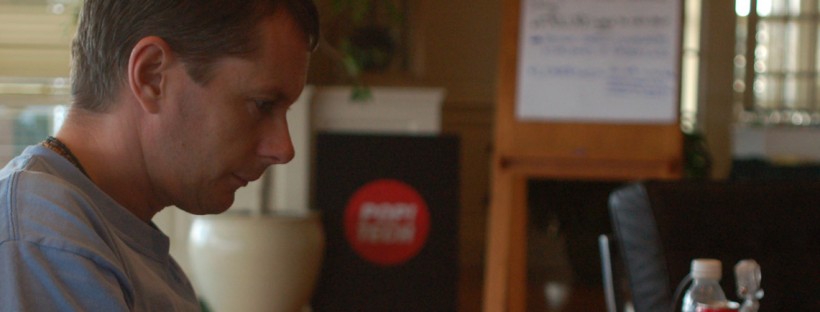Out of the six billion-or-so people on the planet, two out of three probably aren’t in much of a position to do anything about it right now. They’re either too busy trying to get their next meal together, or scratching a living off a few dollars or less a day. We’re talking climate change, and as citizens of the developed world we’re being told more and more that we should take our share of responsibility and act. After all, we’re the lucky ones who can.
In the UK, climate change is top of the agenda. I’ve been back only a week and the newspapers are full of adverts and government advice on how we, as consumers, should be doing our bit. We have an incredibly important role to play, yet many of us still don’t yet seem to realise it. Why aren’t we getting the message? Is asking people to walk the short distance to a local shop really such a problem? Or to not leave things on standby? Or to turn the heating down a notch or two and put a jumper on? On the plus side people at least seem more aware of climate change. But getting them to take that next step and change their habits seems, for many, to be an “ask too far”.
In an attempt to speed them along, Christian Aid have recently been running some hard hitting newspaper campaigns in the UK (I’m not sure if they’re doing the same in the US). At the same time, interest continues to grow in devices such as “standby savers”, which will do what most consumers appear resistant to do and kill the power to their beloved consumer devices when they’re not being used. As a recent Economist article explains:
“Strange though it seems, a typical microwave oven consumes more electricity powering its digital clock than it does heating food. For while heating food requires more than 100 times as much power as running the clock, most microwave ovens stand idle – in standby mode – more than 99% of the time. And they are not alone. Many other devices, such as televisions, DVD players, stereos and computers also spend much of their lives in standby mode, collectively consuming a huge amount of energy”
If doing something as simple as unplugging things at the wall at night reduces energy consumption in the home by as much as 20%, why are so few people doing it? Maybe breaking the global population down into segments may help us understand behaviourally why some people may or may not be interested – or care – about the climate change issue.
Here’s a very rough attempt for starters:
We start with a world population of: 6 billion
We deduct those unable to engage for economic reasons, leaving us with: 2 billion
We deduct those who don’t believe climate change is happening, leaving: 1 billion
We deduct those who believe in it but don’t think it’s ‘our’ doing, leaving: 600 million
We deduct those who believe it’s ‘our’ doing but not causing problems: 450 million
Deduct those who think it’s ‘our’ doing and a problem, but don’t care: 375 million
Deduct those who think it’s ‘our’ doing and a problem, but feel helpless: 300 million
On the basis of these very, very rough figures, it looks as though only 300 million people, or approximately 5% of the total world population, would actually be willing or able to change their behavioural habits based on the climate change issue. For the environmentalists, this segment would be classed as “in the bag”, so-to-speak. We have a number of segments above this hardcore group, and these are the ones needing to be targeted by advertising and educational campaigns. Clearly each segment would require a different ‘marketing’ approach based on a range of unique drivers for their non-engagement, and maybe this is what’s been missing.
I wonder if anyone is working on this?



